You are using an out of date browser. It may not display this or other websites correctly.
You should upgrade or use an alternative browser.
You should upgrade or use an alternative browser.
What is Nmr: Definition and 198 Discussions
Nuclear magnetic resonance (NMR) is a physical phenomenon in which nuclei in a strong constant magnetic field are perturbed by a weak oscillating magnetic field (in the near field) and respond by producing an electromagnetic signal with a frequency characteristic of the magnetic field at the nucleus. This process occurs near resonance, when the oscillation frequency matches the intrinsic frequency of the nuclei, which depends on the strength of the static magnetic field, the chemical environment, and the magnetic properties of the isotope involved; in practical applications with static magnetic fields up to ca. 20 tesla, the frequency is similar to VHF and UHF television broadcasts (60–1000 MHz). NMR results from specific magnetic properties of certain atomic nuclei. Nuclear magnetic resonance spectroscopy is widely used to determine the structure of organic molecules in solution and study molecular physics and crystals as well as non-crystalline materials. NMR is also routinely used in advanced medical imaging techniques, such as in magnetic resonance imaging (MRI).
The most commonly used nuclei are 1H and 13C, although isotopes of many other elements can be studied by high-field NMR spectroscopy as well. In order to interact with the magnetic field in the spectrometer, the nucleus must have an intrinsic nuclear magnetic moment and angular momentum. This occurs when an isotope has a nonzero nuclear spin, meaning an odd number of protons and/or neutrons (see Isotope). Nuclides with even numbers of both have a total spin of zero and are therefore NMR-inactive.
A key feature of NMR is that the resonance frequency of a particular sample substance is usually directly proportional to the strength of the applied magnetic field. It is this feature that is exploited in imaging techniques; if a sample is placed in a non-uniform magnetic field then the resonance frequencies of the sample's nuclei depend on where in the field they are located. Since the resolution of the imaging technique depends on the magnitude of the magnetic field gradient, many efforts are made to develop increased gradient field strength.
The principle of NMR usually involves three sequential steps:
The alignment (polarization) of the magnetic nuclear spins in an applied, constant magnetic field B0.
The perturbation of this alignment of the nuclear spins by a weak oscillating magnetic field, usually referred to as a radio-frequency (RF) pulse. The oscillation frequency required for significant perturbation is dependent upon the static magnetic field (B0) and the nuclei of observation.
The detection of the NMR signal during or after the RF pulse, due to the voltage induced in a detection coil by precession of the nuclear spins around B0. After an RF pulse, precession usually occurs with the nuclei's intrinsic Larmor frequency and, in itself, does not involve transitions between spin states or energy levels.The two magnetic fields are usually chosen to be perpendicular to each other as this maximizes the NMR signal strength. The frequencies of the time-signal response by the total magnetization (M) of the nuclear spins are analyzed in NMR spectroscopy and magnetic resonance imaging. Both use applied magnetic fields (B0) of great strength, often produced by large currents in superconducting coils, in order to achieve dispersion of response frequencies and of very high homogeneity and stability in order to deliver spectral resolution, the details of which are described by chemical shifts, the Zeeman effect, and Knight shifts (in metals). The information provided by NMR can also be increased using hyperpolarization, and/or using two-dimensional, three-dimensional and higher-dimensional techniques.
NMR phenomena are also utilized in low-field NMR, NMR spectroscopy and MRI in the Earth's magnetic field (referred to as Earth's field NMR), and in several types of magnetometers.
View More On Wikipedia.org
The most commonly used nuclei are 1H and 13C, although isotopes of many other elements can be studied by high-field NMR spectroscopy as well. In order to interact with the magnetic field in the spectrometer, the nucleus must have an intrinsic nuclear magnetic moment and angular momentum. This occurs when an isotope has a nonzero nuclear spin, meaning an odd number of protons and/or neutrons (see Isotope). Nuclides with even numbers of both have a total spin of zero and are therefore NMR-inactive.
A key feature of NMR is that the resonance frequency of a particular sample substance is usually directly proportional to the strength of the applied magnetic field. It is this feature that is exploited in imaging techniques; if a sample is placed in a non-uniform magnetic field then the resonance frequencies of the sample's nuclei depend on where in the field they are located. Since the resolution of the imaging technique depends on the magnitude of the magnetic field gradient, many efforts are made to develop increased gradient field strength.
The principle of NMR usually involves three sequential steps:
The alignment (polarization) of the magnetic nuclear spins in an applied, constant magnetic field B0.
The perturbation of this alignment of the nuclear spins by a weak oscillating magnetic field, usually referred to as a radio-frequency (RF) pulse. The oscillation frequency required for significant perturbation is dependent upon the static magnetic field (B0) and the nuclei of observation.
The detection of the NMR signal during or after the RF pulse, due to the voltage induced in a detection coil by precession of the nuclear spins around B0. After an RF pulse, precession usually occurs with the nuclei's intrinsic Larmor frequency and, in itself, does not involve transitions between spin states or energy levels.The two magnetic fields are usually chosen to be perpendicular to each other as this maximizes the NMR signal strength. The frequencies of the time-signal response by the total magnetization (M) of the nuclear spins are analyzed in NMR spectroscopy and magnetic resonance imaging. Both use applied magnetic fields (B0) of great strength, often produced by large currents in superconducting coils, in order to achieve dispersion of response frequencies and of very high homogeneity and stability in order to deliver spectral resolution, the details of which are described by chemical shifts, the Zeeman effect, and Knight shifts (in metals). The information provided by NMR can also be increased using hyperpolarization, and/or using two-dimensional, three-dimensional and higher-dimensional techniques.
NMR phenomena are also utilized in low-field NMR, NMR spectroscopy and MRI in the Earth's magnetic field (referred to as Earth's field NMR), and in several types of magnetometers.
View More On Wikipedia.org
-

Identifying the carbon from C13 NMR spectrum
The molecule is p-phenetidine- Anmol Dubey
- Thread
- Replies: 2
- Forum: Chemistry
-

Chemistry Processing a "Raw Spectrum" - A Beginner's Attempt
The first picture shows the "raw spectrum" before processing it and the second one is my attempt to process it. I was not sure about the solvent peak because it is expected to be a singulett at 7,26 ppm but I could not really identify a clear singulett so I dichtet to go with the peak that stood...- Sippi7299
- Thread
-
- Tags
- Nmr Processing Spectrum
- Replies: 17
- Forum: Biology and Chemistry Homework Help
-

Biotechnology Student from Germany Needs Help Analyzing NMR Spectrum
hello, I'm form Germany and study biotechnology in my third semester and have to find an unknown substance by using an NMR spectrum. Unfortunately I have almost no experience in this field. Is here somebody who could help me analyze the spectrum? I would be very thankful -

I NMR Remote Sensing: Does US Army Detect Buried Weapons?
Hi I was watching Generally - you can activate use a strong magnetic field on ground, perturb it, and the pick the signal up with a satellite. The result would be in 60 to 1000 MHz ( VHF Television ) by a satellite. But the post also says, that US army is using it to detect burried weapons...- seanscon
- Thread
-
- Tags
- nmr remote sensing satellite
- Replies: 2
- Forum: Other Physics Topics
-

A Right Hand Rule in NMR and EPR?
- Narayanan KR
- Thread
- Replies: 8
- Forum: Quantum Physics
-

Finding the Magnetic Field (B_0) on a Graph [NMR]
Background Information (Not Strictly Necessary): As a quick recap, the graph I am dealing with is a semi-logarithmic graph of free induction decay (FID) amplitude as a function of time. To acquire the value for ##{T_2}^*## (and its uncertainty) in the graph, I used the below equation to do so...- Athenian
- Thread
-
- Tags
- Field Graph Magnetic Magnetic field Nmr
- Replies: 6
- Forum: Introductory Physics Homework Help
-

Calculating Numerical Uncertainties in an Equation
Background Information: I am working on a pulsed NMR lab project that involves graphing out a semi-log graph of free induction decay amplitude as a function of time. After graphing out the semi-log graph, I am to determine the apparent spin-spin relaxation time (##{T_2}^*##) through the...- Athenian
- Thread
- Replies: 20
- Forum: Introductory Physics Homework Help
-
M
Biomedical Engineering: Scanning k-space in NMR with readout gradient
Hi, Firstly, I apologize if this is the wrong forum to post this. I am learning about this concept in a biomedical engineering context, but perhaps this may be better suited to the Biology or Physics pages. If so, please let me know and I can move the post. In short, I am confused how we can...- Master1022
- Thread
- Replies: 11
- Forum: Electrical Engineering
-

Spin-Lattice and Spin-Spin Relaxation Time Question
Please refer to the homework statement. Or, if one would like to put it in other words, how would I go about finding ##T_2## if I know the delay time between 90-degree and 180-degree pulses? Is there an equation that helps solve this succinctly?- Athenian
- Thread
-
- Tags
- Nmr Relaxation time Time
- Replies: 1
- Forum: Introductory Physics Homework Help
-
O
Chemistry 1H NMR: Unsymmetric Peak Multiplicity and J Values
The peaks all look unfamiliar, no symmetry, or very little, and they all integrate to a small number of hydrogen while being surrounded by a large number. Here are the images.1.) 2.) 3.) 4.) 5.) Thanks for any explanations. I don't expect anyone to do it for me, I just have no other...- Organic_Student_2020
- Thread
-
- Tags
- multiplicity Nmr Peak
- Replies: 2
- Forum: Biology and Chemistry Homework Help
-
E
The NMR Selection Rules: Understanding Allowed Spin State Transitions
For simplicity I only take a system of two interacting spin-##1/2## nuclei. If the spins have quantum numbers ##m_1## and ##m_2## respectively when in a certain state, then the energy of that particular state is$$E_{m_1m_2} = m_1 v_{0,1} + m_2 v_{0,2} + m_1 m_2 J_{12}$$where ##v_{0,1}## and...- etotheipi
- Thread
-
- Tags
- Nmr Rules Selection rules
- Replies: 2
- Forum: Chemistry
-
E
Why is the NMR multiplicity incorrect in some places?
I was doing a question that wanted you to determine the structure given a molecular formula and an NMR spectrum. The following was the answer: I'm unsure as to how the multiplicities were obtained. For ##X##, the neighbouring carbon ##Y## has 2 hydrogens, so this peak is a triplet (OK so far!)...- etotheipi
- Thread
-
- Tags
- multiplicity Nmr
- Replies: 3
- Forum: Chemistry
-
G
NMR: Why do "identical" nuclei not couple with each other?
Hello there, Spin–spin coupling is encountered in the majority of NMR spectra. However, it does only occur when the two interacting nuclei are non-"identical". But why is the coupling not occurring between "identical" nuclei? I have been wondering about this because I could not think of a... -

Imperfections in magnet pole pieces
Hi all, I'm fairly new here. I'm currently designing an as-homogene-as-possible permanent magnet for low-field NMR and similar experiments. I'm on a fairly tight budget, and having finally found pole pieces for my magnets, I got them even though they have a small saw cut in the edge. approx. 5...- Christoffer B
- Thread
- Replies: 2
- Forum: General Engineering
-
W
Relation between magnetism and material creep
Hello, I am a civil engineer and have been working on concrete creep phenomenon for several years now. After reviewing a large amount of literature on related topics throughout this time, some interesting observations have emerged, and they have formed the idea that the material creep mechanism... -
L
B What region in NMR spectrum should I choose for integration?
Hi all, I have nuclear magnetic resonance spectrum. The vertical axis is intensity, and the horizontal axis is index. I need to find integral under the peak. But I am not sure, what region should I choose for integration - region 1 or region 2? Please find attached the spectrum.- Leonid92
- Thread
-
- Tags
- Integration Nmr Spectrum
- Replies: 1
- Forum: Other Physics Topics
-

I In NMR, Why does longitudinal magnetization decrease when....
*** Answered off site. No need for further explanation. *** I am trying to understand MR Imaging physics. In NMR, when you put some energy in a system with a static longitudinal net magnetization, you create a transverse component and the longitudinal component decreases (in other words, net...- OmerKocak
- Thread
- Replies: 1
- Forum: Quantum Physics
-

I What are the magnetic states of nucleons?
Could I have hundred times the ground state or there is a limit? Is there a limit for excited magnetic momentum that if reached the nucleous explode or generate gammas? I suppose If I excite it it would spin faster but proportional to quantum values. Note: there is a "theory" to avoid electron...- Javier Lopez
- Thread
- Replies: 10
- Forum: High Energy, Nuclear, Particle Physics
-
F
NMR nuclear spin absorption/emission question
NMR textbooks often state that an ensemble of nuclei cannot absorb the excitation radiowaves if the spin population is "saturated" (wherein "saturated" is often described as equal spin population in all energy states, or a population inversion). But these same NMR textbooks show that a 180...- ForgetfulPhysicist
- Thread
-
- Tags
- Nmr Nuclear Nuclear spin Spin
- Replies: 13
- Forum: Chemistry
-

Can C14 Atoms Be Detected Using NMR Despite 0% Natural Abundance?
Homework Statement We want to image carbon C14 atoms using NMR with magnetic field of B=3 T. What frequency do we need to use? Use the following facts: C14 has 0% abundance, nuclear spin of I=3 and g=0.273 Homework Equations The frequency is given by f= (2⋅I) ⋅ (g ⋅B ⋅μ)/(1836 ⋅h), where μ...- HastiM
- Thread
- Replies: 1
- Forum: Introductory Physics Homework Help
-
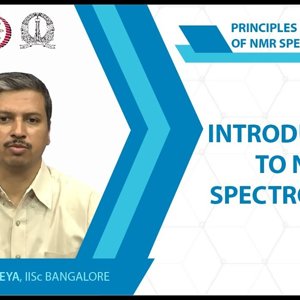
NMR Spectroscopy by Prof. Hanudatta S. Atreya (NPTEL):- Lecture 1: Introduction to NMR spectroscopy
All copyright strictly reserved to Prof. Atreya and NPTEL, Govt. of India. COURSE WEBSITE: https://www.youtube.com/redirect?redir_token=J3W-BvVF9P_QSjr1ljVg8I2O_Bl8MTUyNDU4NDYyMEAxNTI0NDk4MjIw&event=playlist_description&q=http%3A%2F%2Fwww.nptel.ac.in%2Fcourses%2F104108078%2F10- Wrichik Basu
- Media item
- nmr nuclear magnetic resonance spectrocopy
- Comments: 0
- Category: Chemistry
-
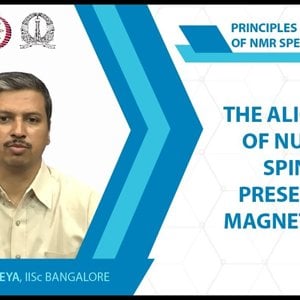
NMR Spectroscopy by Prof. Hanudatta S. Atreya (NPTEL):- Lecture 2: The alignment of nuclear spins in presence of magnetic field
All copyright strictly reserved to Prof. Atreya and NPTEL, Govt. of India. COURSE WEBSITE: https://www.youtube.com/redirect?redir_token=J3W-BvVF9P_QSjr1ljVg8I2O_Bl8MTUyNDU4NDYyMEAxNTI0NDk4MjIw&event=playlist_description&q=http%3A%2F%2Fwww.nptel.ac.in%2Fcourses%2F104108078%2F10- Wrichik Basu
- Media item
- nmr nuclear magnetic resonance spectrocopy
- Comments: 0
- Category: Chemistry
-
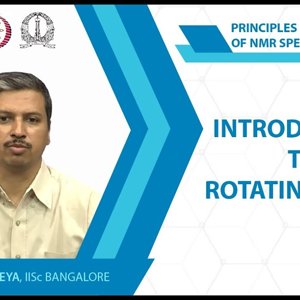
NMR Spectroscopy by Prof. Hanudatta S. Atreya (NPTEL):- Lecture 3: Introduction to rotating frame
All copyright strictly reserved to Prof. Atreya and NPTEL, Govt. of India. COURSE WEBSITE: https://www.youtube.com/redirect?redir_token=J3W-BvVF9P_QSjr1ljVg8I2O_Bl8MTUyNDU4NDYyMEAxNTI0NDk4MjIw&event=playlist_description&q=http%3A%2F%2Fwww.nptel.ac.in%2Fcourses%2F104108078%2F10- Wrichik Basu
- Media item
- nmr nuclear magnetic resonance spectrocopy
- Comments: 0
- Category: Chemistry
-
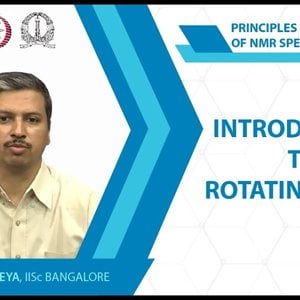
NMR Spectroscopy by Prof. Hanudatta S. Atreya (NPTEL):- Lecture 4: Introduction to rotating frame
All copyright strictly reserved to Prof. Atreya and NPTEL, Govt. of India. COURSE WEBSITE: https://www.youtube.com/redirect?redir_token=J3W-BvVF9P_QSjr1ljVg8I2O_Bl8MTUyNDU4NDYyMEAxNTI0NDk4MjIw&event=playlist_description&q=http%3A%2F%2Fwww.nptel.ac.in%2Fcourses%2F104108078%2F10- Wrichik Basu
- Media item
- nmr nuclear magnetic resonance spectrocopy
- Comments: 0
- Category: Chemistry
-
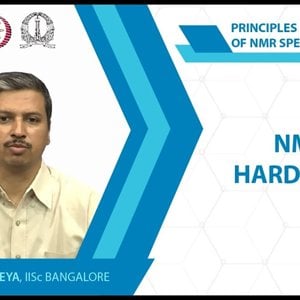
NMR Spectroscopy by Prof. Hanudatta S. Atreya (NPTEL):- Lecture 5: NMR Hardware
All copyright strictly reserved to Prof. Atreya and NPTEL, Govt. of India. COURSE WEBSITE: https://www.youtube.com/redirect?redir_token=J3W-BvVF9P_QSjr1ljVg8I2O_Bl8MTUyNDU4NDYyMEAxNTI0NDk4MjIw&event=playlist_description&q=http%3A%2F%2Fwww.nptel.ac.in%2Fcourses%2F104108078%2F10- Wrichik Basu
- Media item
- nmr nuclear magnetic resonance spectrocopy
- Comments: 0
- Category: Chemistry
-
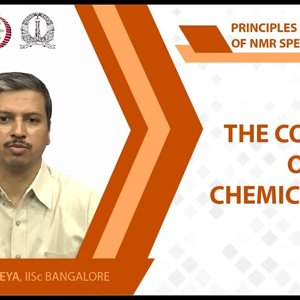
NMR Spectroscopy by Prof. Hanudatta S. Atreya (NPTEL):- Lecture 6: The concept of chemical shift
All copyright strictly reserved to Prof. Atreya and NPTEL, Govt. of India. COURSE WEBSITE: https://www.youtube.com/redirect?redir_token=J3W-BvVF9P_QSjr1ljVg8I2O_Bl8MTUyNDU4NDYyMEAxNTI0NDk4MjIw&event=playlist_description&q=http%3A%2F%2Fwww.nptel.ac.in%2Fcourses%2F104108078%2F10- Wrichik Basu
- Media item
- nmr nuclear magnetic resonance spectrocopy
- Comments: 0
- Category: Chemistry
-
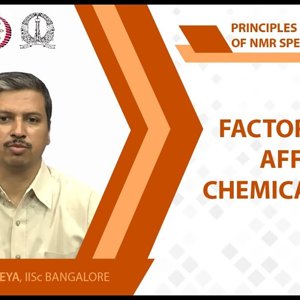
NMR Spectroscopy by Prof. Hanudatta S. Atreya (NPTEL):- Lecture 7: Factors that affect chemical shifts
All copyright strictly reserved to Prof. Atreya and NPTEL, Govt. of India. COURSE WEBSITE: https://www.youtube.com/redirect?redir_token=J3W-BvVF9P_QSjr1ljVg8I2O_Bl8MTUyNDU4NDYyMEAxNTI0NDk4MjIw&event=playlist_description&q=http%3A%2F%2Fwww.nptel.ac.in%2Fcourses%2F104108078%2F10- Wrichik Basu
- Media item
- nmr nuclear magnetic resonance spectrocopy
- Comments: 0
- Category: Chemistry
-
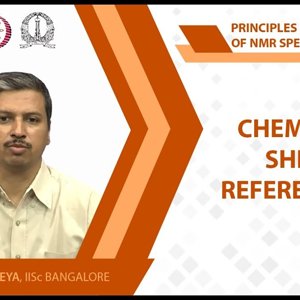
NMR Spectroscopy by Prof. Hanudatta S. Atreya (NPTEL):- Lecture 8: Chemical shift referencing
All copyright strictly reserved to Prof. Atreya and NPTEL, Govt. of India. COURSE WEBSITE: https://www.youtube.com/redirect?redir_token=J3W-BvVF9P_QSjr1ljVg8I2O_Bl8MTUyNDU4NDYyMEAxNTI0NDk4MjIw&event=playlist_description&q=http%3A%2F%2Fwww.nptel.ac.in%2Fcourses%2F104108078%2F10- Wrichik Basu
- Media item
- nmr nuclear magnetic resonance spectrocopy
- Comments: 0
- Category: Chemistry
-
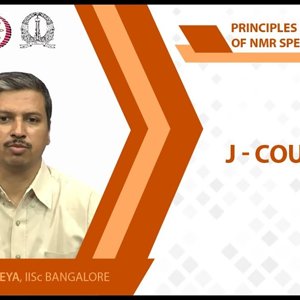
NMR Spectroscopy by Prof. Hanudatta S. Atreya (NPTEL):- Lecture 9: J- coupling
All copyright strictly reserved to Prof. Atreya and NPTEL, Govt. of India. COURSE WEBSITE: https://www.youtube.com/redirect?redir_token=J3W-BvVF9P_QSjr1ljVg8I2O_Bl8MTUyNDU4NDYyMEAxNTI0NDk4MjIw&event=playlist_description&q=http%3A%2F%2Fwww.nptel.ac.in%2Fcourses%2F104108078%2F10- Wrichik Basu
- Media item
- nmr nuclear magnetic resonance spectrocopy
- Comments: 0
- Category: Chemistry
-
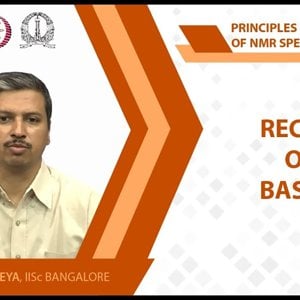
NMR Spectroscopy by Prof. Hanudatta S. Atreya (NPTEL):- Lecture 10: Recap of basics
All copyright strictly reserved to Prof. Atreya and NPTEL, Govt. of India. COURSE WEBSITE: https://www.youtube.com/redirect?redir_token=J3W-BvVF9P_QSjr1ljVg8I2O_Bl8MTUyNDU4NDYyMEAxNTI0NDk4MjIw&event=playlist_description&q=http%3A%2F%2Fwww.nptel.ac.in%2Fcourses%2F104108078%2F10- Wrichik Basu
- Media item
- nmr nuclear magnetic resonance spectrocopy
- Comments: 0
- Category: Chemistry
-
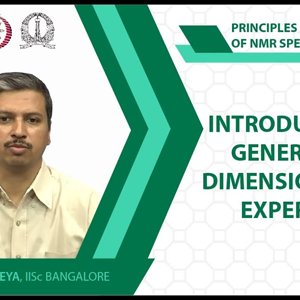
NMR Spectroscopy by Prof. Hanudatta S. Atreya (NPTEL):- Lecture 11: Introduction to general one dimensional NMR experiment
All copyright strictly reserved to Prof. Atreya and NPTEL, Govt. of India. COURSE WEBSITE: https://www.youtube.com/redirect?redir_token=J3W-BvVF9P_QSjr1ljVg8I2O_Bl8MTUyNDU4NDYyMEAxNTI0NDk4MjIw&event=playlist_description&q=http%3A%2F%2Fwww.nptel.ac.in%2Fcourses%2F104108078%2F10- Wrichik Basu
- Media item
- nmr nuclear magnetic resonance spectrocopy
- Comments: 0
- Category: Chemistry
-
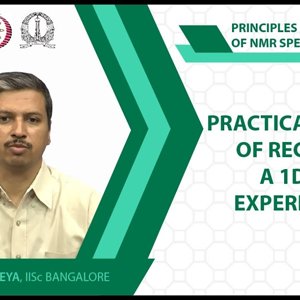
NMR Spectroscopy by Prof. Hanudatta S. Atreya (NPTEL):- Lecture 12: Practical aspects of recording a 1D NMR experiment I
All copyright strictly reserved to Prof. Atreya and NPTEL, Govt. of India. COURSE WEBSITE: https://www.youtube.com/redirect?redir_token=J3W-BvVF9P_QSjr1ljVg8I2O_Bl8MTUyNDU4NDYyMEAxNTI0NDk4MjIw&event=playlist_description&q=http%3A%2F%2Fwww.nptel.ac.in%2Fcourses%2F104108078%2F10- Wrichik Basu
- Media item
- nmr nuclear magnetic resonance spectrocopy
- Comments: 0
- Category: Chemistry
-
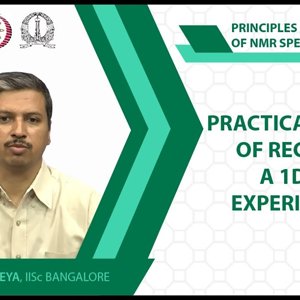
NMR Spectroscopy by Prof. Hanudatta S. Atreya (NPTEL):- Lecture 13: Practical aspects of recording a 1D NMR experiment II
All copyright strictly reserved to Prof. Atreya and NPTEL, Govt. of India. COURSE WEBSITE: https://www.youtube.com/redirect?redir_token=J3W-BvVF9P_QSjr1ljVg8I2O_Bl8MTUyNDU4NDYyMEAxNTI0NDk4MjIw&event=playlist_description&q=http%3A%2F%2Fwww.nptel.ac.in%2Fcourses%2F104108078%2F10- Wrichik Basu
- Media item
- nmr nuclear magnetic resonance spectrocopy
- Comments: 0
- Category: Chemistry
-
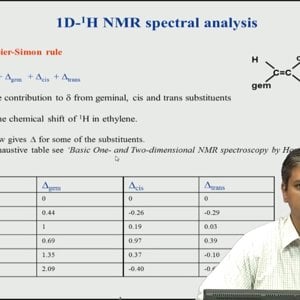
NMR Spectroscopy by Prof. Hanudatta S. Atreya (NPTEL):- Lecture 14: Practical aspects of recording a 1D NMR experiment III
All copyright strictly reserved to Prof. Atreya and NPTEL, Govt. of India. COURSE WEBSITE: https://www.youtube.com/redirect?redir_token=J3W-BvVF9P_QSjr1ljVg8I2O_Bl8MTUyNDU4NDYyMEAxNTI0NDk4MjIw&event=playlist_description&q=http%3A%2F%2Fwww.nptel.ac.in%2Fcourses%2F104108078%2F10- Wrichik Basu
- Media item
- nmr nuclear magnetic resonance spectrocopy
- Comments: 0
- Category: Chemistry
-
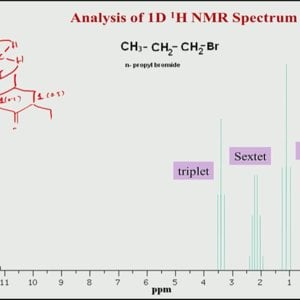
NMR Spectroscopy by Prof. Hanudatta S. Atreya (NPTEL):- Lecture 15: NMR Data processing
All copyright strictly reserved to Prof. Atreya and NPTEL, Govt. of India. COURSE WEBSITE: https://www.youtube.com/redirect?redir_token=J3W-BvVF9P_QSjr1ljVg8I2O_Bl8MTUyNDU4NDYyMEAxNTI0NDk4MjIw&event=playlist_description&q=http%3A%2F%2Fwww.nptel.ac.in%2Fcourses%2F104108078%2F10- Wrichik Basu
- Media item
- nmr nuclear magnetic resonance spectrocopy
- Comments: 0
- Category: Chemistry
-
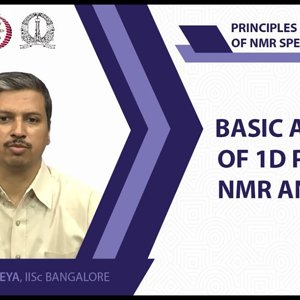
NMR Spectroscopy by Prof. Hanudatta S. Atreya (NPTEL):- Lecture 16: Basic aspects of 1D proton NMR analysis
All copyright strictly reserved to Prof. Atreya and NPTEL, Govt. of India. COURSE WEBSITE: https://www.youtube.com/redirect?redir_token=J3W-BvVF9P_QSjr1ljVg8I2O_Bl8MTUyNDU4NDYyMEAxNTI0NDk4MjIw&event=playlist_description&q=http%3A%2F%2Fwww.nptel.ac.in%2Fcourses%2F104108078%2F10- Wrichik Basu
- Media item
- nmr nuclear magnetic resonance spectrocopy
- Comments: 0
- Category: Chemistry
-
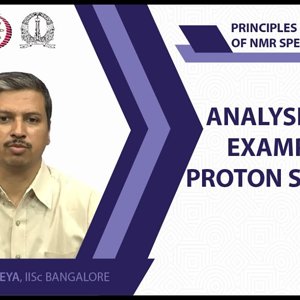
NMR Spectroscopy by Prof. Hanudatta S. Atreya (NPTEL):- Lecture 17: Analysis of an example 1D proton spectrum
All copyright strictly reserved to Prof. Atreya and NPTEL, Govt. of India. COURSE WEBSITE: https://www.youtube.com/redirect?redir_token=J3W-BvVF9P_QSjr1ljVg8I2O_Bl8MTUyNDU4NDYyMEAxNTI0NDk4MjIw&event=playlist_description&q=http%3A%2F%2Fwww.nptel.ac.in%2Fcourses%2F104108078%2F10- Wrichik Basu
- Media item
- nmr nuclear magnetic resonance spectrocopy
- Comments: 0
- Category: Chemistry
-
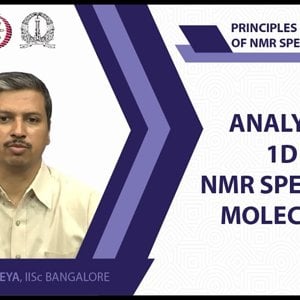
NMR Spectroscopy by Prof. Hanudatta S. Atreya (NPTEL):- Lecture 18: Analysis of 1D 1H NMR spectra of molecules I
All copyright strictly reserved to Prof. Atreya and NPTEL, Govt. of India. COURSE WEBSITE: https://www.youtube.com/redirect?redir_token=J3W-BvVF9P_QSjr1ljVg8I2O_Bl8MTUyNDU4NDYyMEAxNTI0NDk4MjIw&event=playlist_description&q=http%3A%2F%2Fwww.nptel.ac.in%2Fcourses%2F104108078%2F10- Wrichik Basu
- Media item
- nmr nuclear magnetic resonance spectrocopy
- Comments: 0
- Category: Chemistry
-
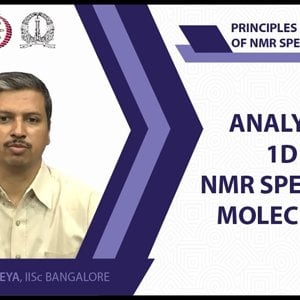
NMR Spectroscopy by Prof. Hanudatta S. Atreya (NPTEL):- Lecture 19: Analysis of 1D 1H NMR spectra of molecules II
All copyright strictly reserved to Prof. Atreya and NPTEL, Govt. of India. COURSE WEBSITE: https://www.youtube.com/redirect?redir_token=J3W-BvVF9P_QSjr1ljVg8I2O_Bl8MTUyNDU4NDYyMEAxNTI0NDk4MjIw&event=playlist_description&q=http%3A%2F%2Fwww.nptel.ac.in%2Fcourses%2F104108078%2F10- Wrichik Basu
- Media item
- nmr nuclear magnetic resonance spectrocopy
- Comments: 0
- Category: Chemistry
-
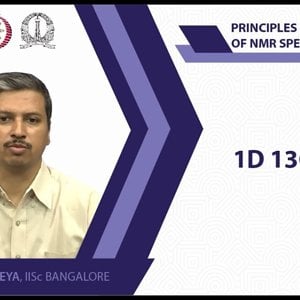
NMR Spectroscopy by Prof. Hanudatta S. Atreya (NPTEL):- Lecture 20: 1D 13C NMR
All copyright strictly reserved to Prof. Atreya and NPTEL, Govt. of India. COURSE WEBSITE: https://www.youtube.com/redirect?redir_token=J3W-BvVF9P_QSjr1ljVg8I2O_Bl8MTUyNDU4NDYyMEAxNTI0NDk4MjIw&event=playlist_description&q=http%3A%2F%2Fwww.nptel.ac.in%2Fcourses%2F104108078%2F10- Wrichik Basu
- Media item
- nmr nuclear magnetic resonance spectrocopy
- Comments: 0
- Category: Chemistry
-
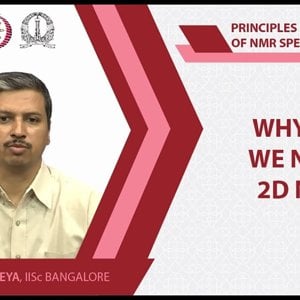
NMR Spectroscopy by Prof. Hanudatta S. Atreya (NPTEL):- Lecture 21: Why do we need 2D NMR
All copyright strictly reserved to Prof. Atreya and NPTEL, Govt. of India. COURSE WEBSITE: https://www.youtube.com/redirect?redir_token=J3W-BvVF9P_QSjr1ljVg8I2O_Bl8MTUyNDU4NDYyMEAxNTI0NDk4MjIw&event=playlist_description&q=http%3A%2F%2Fwww.nptel.ac.in%2Fcourses%2F104108078%2F10- Wrichik Basu
- Media item
- nmr nuclear magnetic resonance spectrocopy
- Comments: 0
- Category: Chemistry
-
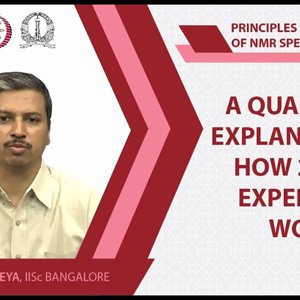
NMR Spectroscopy by Prof. Hanudatta S. Atreya (NPTEL):- Lecture 22: A qualitative explanation of how 2D NMR experiment works
All copyright strictly reserved to Prof. Atreya and NPTEL, Govt. of India. COURSE WEBSITE: https://www.youtube.com/redirect?redir_token=J3W-BvVF9P_QSjr1ljVg8I2O_Bl8MTUyNDU4NDYyMEAxNTI0NDk4MjIw&event=playlist_description&q=http%3A%2F%2Fwww.nptel.ac.in%2Fcourses%2F104108078%2F10- Wrichik Basu
- Media item
- nmr nuclear magnetic resonance spectrocopy
- Comments: 0
- Category: Chemistry
-
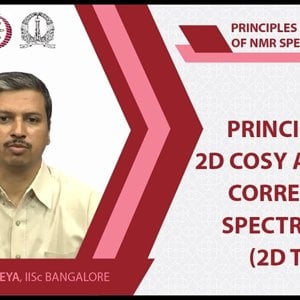
NMR Spectroscopy by Prof. Hanudatta S. Atreya (NPTEL):- Lecture 23: Principles of 2D COSY and Total correlation spectroscopy (2D TOCSY)
All copyright strictly reserved to Prof. Atreya and NPTEL, Govt. of India. COURSE WEBSITE: https://www.youtube.com/redirect?redir_token=J3W-BvVF9P_QSjr1ljVg8I2O_Bl8MTUyNDU4NDYyMEAxNTI0NDk4MjIw&event=playlist_description&q=http%3A%2F%2Fwww.nptel.ac.in%2Fcourses%2F104108078%2F10- Wrichik Basu
- Media item
- nmr nuclear magnetic resonance spectrocopy
- Comments: 0
- Category: Chemistry
-
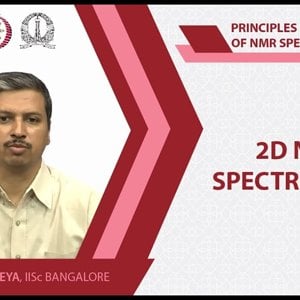
NMR Spectroscopy by Prof. Hanudatta S. Atreya (NPTEL):- Lecture 24: 2D NOE-spectroscopy
All copyright strictly reserved to Prof. Atreya and NPTEL, Govt. of India. COURSE WEBSITE: https://www.youtube.com/redirect?redir_token=J3W-BvVF9P_QSjr1ljVg8I2O_Bl8MTUyNDU4NDYyMEAxNTI0NDk4MjIw&event=playlist_description&q=http%3A%2F%2Fwww.nptel.ac.in%2Fcourses%2F104108078%2F10- Wrichik Basu
- Media item
- nmr nuclear magnetic resonance spectrocopy
- Comments: 0
- Category: Chemistry
-
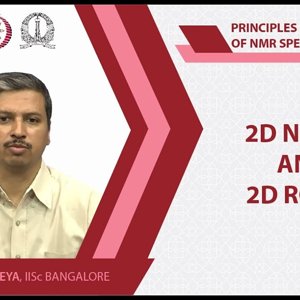
NMR Spectroscopy by Prof. Hanudatta S. Atreya (NPTEL):- Lecture 25: 2D NOESY and 2D ROESY
All copyright strictly reserved to Prof. Atreya and NPTEL, Govt. of India. COURSE WEBSITE: https://www.youtube.com/redirect?redir_token=J3W-BvVF9P_QSjr1ljVg8I2O_Bl8MTUyNDU4NDYyMEAxNTI0NDk4MjIw&event=playlist_description&q=http%3A%2F%2Fwww.nptel.ac.in%2Fcourses%2F104108078%2F10- Wrichik Basu
- Media item
- nmr nuclear magnetic resonance spectrocopy
- Comments: 0
- Category: Chemistry
-
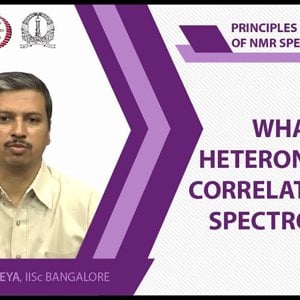
NMR Spectroscopy by Prof. Hanudatta S. Atreya (NPTEL):- Lecture 26: What is heteronuclear correlation NMR spectroscopy
All copyright strictly reserved to Prof. Atreya and NPTEL, Govt. of India. COURSE WEBSITE: https://www.youtube.com/redirect?redir_token=J3W-BvVF9P_QSjr1ljVg8I2O_Bl8MTUyNDU4NDYyMEAxNTI0NDk4MjIw&event=playlist_description&q=http%3A%2F%2Fwww.nptel.ac.in%2Fcourses%2F104108078%2F10- Wrichik Basu
- Media item
- nmr nuclear magnetic resonance spectrocopy
- Comments: 0
- Category: Chemistry
-
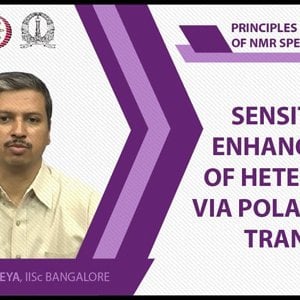
NMR Spectroscopy by Prof. Hanudatta S. Atreya (NPTEL):- Lecture 27: Sensitivity enhancement of heternuclei via polarization transfer
All copyright strictly reserved to Prof. Atreya and NPTEL, Govt. of India. COURSE WEBSITE: https://www.youtube.com/redirect?redir_token=J3W-BvVF9P_QSjr1ljVg8I2O_Bl8MTUyNDU4NDYyMEAxNTI0NDk4MjIw&event=playlist_description&q=http%3A%2F%2Fwww.nptel.ac.in%2Fcourses%2F104108078%2F10- Wrichik Basu
- Media item
- nmr nuclear magnetic resonance spectrocopy
- Comments: 0
- Category: Chemistry
-
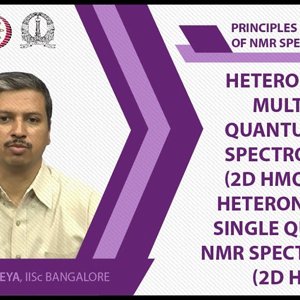
NMR Spectroscopy by Prof. Hanudatta S. Atreya (NPTEL):- Lecture 28: Heteronucler multiple(2D HMQC) and single quantum NMR spectroscopy (2D HSQC)
All copyright strictly reserved to Prof. Atreya and NPTEL, Govt. of India. COURSE WEBSITE: https://www.youtube.com/redirect?redir_token=J3W-BvVF9P_QSjr1ljVg8I2O_Bl8MTUyNDU4NDYyMEAxNTI0NDk4MjIw&event=playlist_description&q=http%3A%2F%2Fwww.nptel.ac.in%2Fcourses%2F104108078%2F10- Wrichik Basu
- Media item
- nmr nuclear magnetic resonance spectrocopy
- Comments: 0
- Category: Chemistry
-
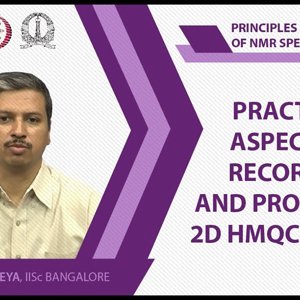
NMR Spectroscopy by Prof. Hanudatta S. Atreya (NPTEL):- Lecture 29: Practical aspects of recording and processing 2D HMQC or HSQC
All copyright strictly reserved to Prof. Atreya and NPTEL, Govt. of India. COURSE WEBSITE: https://www.youtube.com/redirect?redir_token=J3W-BvVF9P_QSjr1ljVg8I2O_Bl8MTUyNDU4NDYyMEAxNTI0NDk4MjIw&event=playlist_description&q=http%3A%2F%2Fwww.nptel.ac.in%2Fcourses%2F104108078%2F10- Wrichik Basu
- Media item
- nmr nuclear magnetic resonance spectrocopy
- Comments: 0
- Category: Chemistry
-
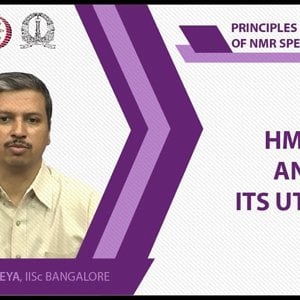
NMR Spectroscopy by Prof. Hanudatta S. Atreya (NPTEL):- Lecture :30 HMBC and its utility
All copyright strictly reserved to Prof. Atreya and NPTEL, Govt. of India. COURSE WEBSITE: https://www.youtube.com/redirect?redir_token=J3W-BvVF9P_QSjr1ljVg8I2O_Bl8MTUyNDU4NDYyMEAxNTI0NDk4MjIw&event=playlist_description&q=http%3A%2F%2Fwww.nptel.ac.in%2Fcourses%2F104108078%2F10- Wrichik Basu
- Media item
- nmr nuclear magnetic resonance spectrocopy
- Comments: 0
- Category: Chemistry